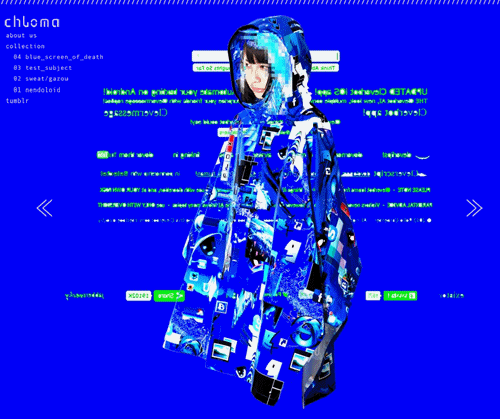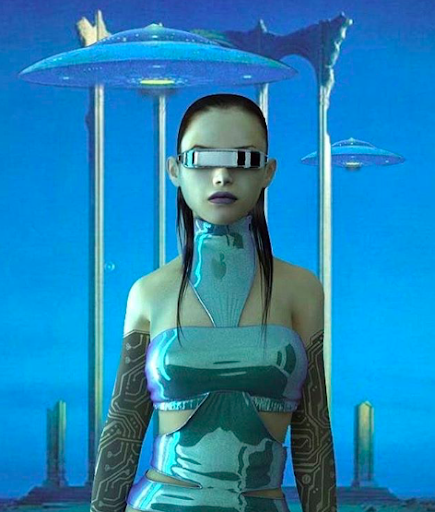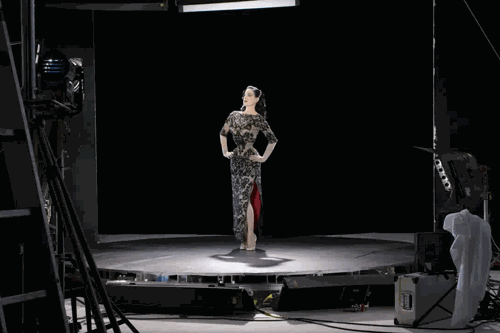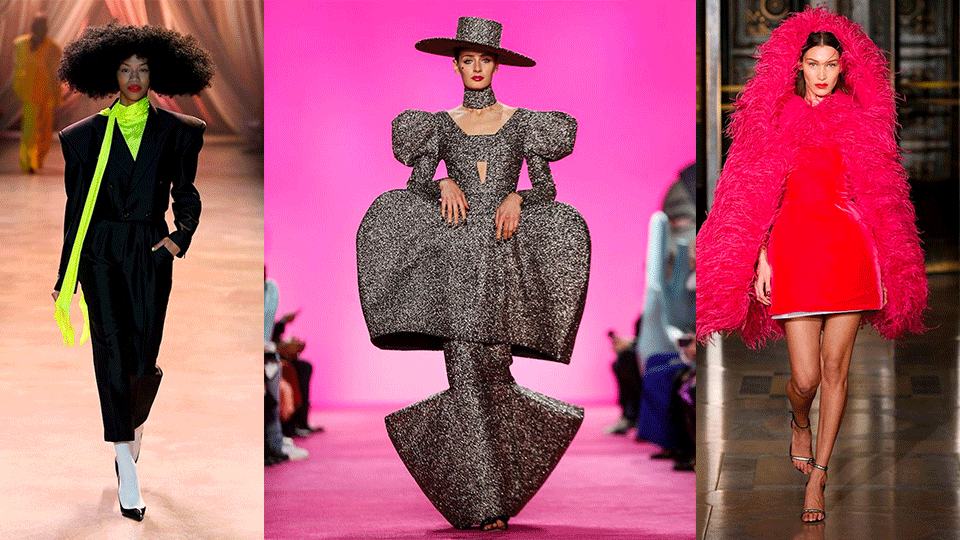- À New Wave to Fashion, À New Way of Living. Download Now on iOS Android Canada SS22
- hello@alahausse.ca
The Coevolution of Digital Design, Creativity, and Fashion

The Future of Circular Fashion on Mars
February 24, 2022
Smart Clothing: The Future of Fashion is Here
February 25, 2022
Written by: Dylan Stoll
When revolutions in technology occur, unimaginable things can happen. Take the industrial revolution for example. Near the end of the 18th century, human society went from a modest small-scale economy that was predominantly agriculture and handicraft-based to a steam-powered, large-scale factory-based economy. Since then, we have experienced three more revolutions: The first used steam power to mechanize production, the second utilized electricity to energize mass production, the third used technology and information to automate industries, and the fourth, the one we are in today, has revolutionized modern industries through the systematic merging of the biological, the digital, and the physical realms into an experience unlike anything humanity has seen before.
From this merging, many new innovations have sprouted across a field of industries, and the fashion sector, being a global powerhouse, is among them. From the ground up, improvements have been made, but some of the greatest are found in fashion design, where options once limited by availability and space are thrown out the window. Welcome to the limitless world of digital design.
The Evolution of Fashion

Fashion is an integral part of how we express ourselves as human beings, and because of this, the industry itself is experiencing this same digital revolution. Today we are seeing virtual reality fashion shows, a whole rearrangement of the retail market as it moves online, the emergence of high-tech apparel and fashion accessories, and more recently, the 3-D digital design of clothing items on digital platforms.
The digital world promises to take fashion and fashion accessories to a whole new level, one that excites and engages our senses. No longer are clothing items simply an innocuous accessory of superficial expression; now they can be used for anything from medical self-assessments to mobile phone integration; and these improvements are only more likely to come as time passes.
The Potential of Digital Fashion Designing
A fascinating advancement in the creative process of designers, digital design provides the designer with nearly limitless power when producing novel apparel items. The possibilities are almost endless for a designer wielding a well-structured 3-D designer program, and they can do it all from the safety of their own home without any assistance whatsoever. Gone are the days of frenzied designer rooms filled with rolls of fabric and frantic workers. The digital age negates the need for any of that clutter; materials, space, and, unfortunately, people as well.
An Opportunity for Many
All kinds of positions are now spreading like wildfire across the fashion landscape, and are readily available to anyone with a passion for both technology and fashion. As the fashion industry adapts to the digital age, positions in digital transformation, digital marketing, customer relationship management strategy and improvement, omnichannel management, 3D-design and 3D-pattern making, data science, supply chains, sustainable fashion design, and social media are all projected to achieve a significant increase in job availability following the pandemic.
So what does this mean for the future of the fashion job market? Be it fashion, or any other focus, the digital age is forcing those within these industries to adapt. The savings in costs associated with materials, locations, and other necessities are simply too high to ignore for any company that hopes to thrive, so both prospective and current employees will have to act accordingly.

What About Creativity?

For some, it may be daunting but the digital age is upon us. It is an age of exponential adaptation, diversification, and growth, leaving many people scrambling for a seat at the table. Others are more wary of the philosophical and psychological implications inherent to such extensive changes in how we develop, process and breathe life into new ideas. Will we lose that incomprehensible human touch that many artists and creatives speak of? “Customer behavior has changed so dramatically,” said Burberry chief creative officer and CEO Christopher Bailey in an interview with Vivian Chen of Style.
“This doesn’t mean that you lose any creativity or any of the artisanal skills [behind the collections].” The same is often said of the instantaneous nature of the modern fashion experience. With so much so easily and readily available, perhaps something is lost along the way. Bailey thinks otherwise, stating that craftsmanship, design and inspiration are never lost, and in some cases, are even required in greater amounts.
The Times Are Changing
Being a company that hopes to thrive in the digital era of the fashion industry, all of us here at ÀLA.HAUSSE are always excited for any new technological innovation that enriches the fashion experience, especially those that take sustainability into account. Time goes on, things change; the fashion industry is not impervious to this fact of life, and though things will never be the same, it should excite everyone to know that the future of fashion is rooted in sustainability. Digitalization doesn’t just create new jobs and provide new platforms for artists to develop and present their work, it also reduces the amount of clothing waste associated with the developmental process! Now that is something we can stand behind!
À New Wave to Fashion. À New Way of Living.
Your First and Last Sustainable AI and Social Powered P2P/B2C Multifunctional Ecosystem (BUY/SELL/RENT/LEND/ SWAP/GIFT), for Me and You.
Apple: https://apple.co/3F8EgcJ
Android: https://bit.ly/3f7jEY3
Via ÀLA.HAUSSE’s Multi-functional and Multi-purposeful Fashion Ecosystem- BUY/SELL/RENT/LEND mobile application, INDIVIDUALS & brands ( BETA) are encouraged to REBUY, RESELL, REUSE and UP-CYCLE their personal “Clossets” aka Clothing Assets. Through this consumerism habit shift we slow down the urgency on fashion carbon footprint, aiding sustainability as a whole.
Launching NOW on iOS Android Canada
Give me a read: shorturl.at/rIMT8
More stories on www.alahausse.ca, Medium & Hackernoon. Follow & Tag @ala.hausse
#ALAHAUSSE #WEARYOURPURPOSE #HAUSSEPEOPLE
References:
- https://www.weforum.org/agenda/2016/01/the-fourth-industrial-revolution-what-it-means-and-how-to-respond/
- https://www.forbes.com/sites/cathyhackl/2021/10/17/fashion-in-3d-an-opportunity-for-greater-innovation/?sh=418a39437a5a
- https://fashinnovation.nyc/how-will-vr-change-the-fashion-industry/
- https://beyondtalentrecruitment.com/blog/the-future-of-fashion-jobs-covid
- https://www.cfo.com/strategy/2020/07/nike-to-cut-jobs-as-part-of-digital-sales-push/
- https://www.scmp.com/magazines/style/fashion-beauty/article/2023600/see-now-buy-now-fashion








